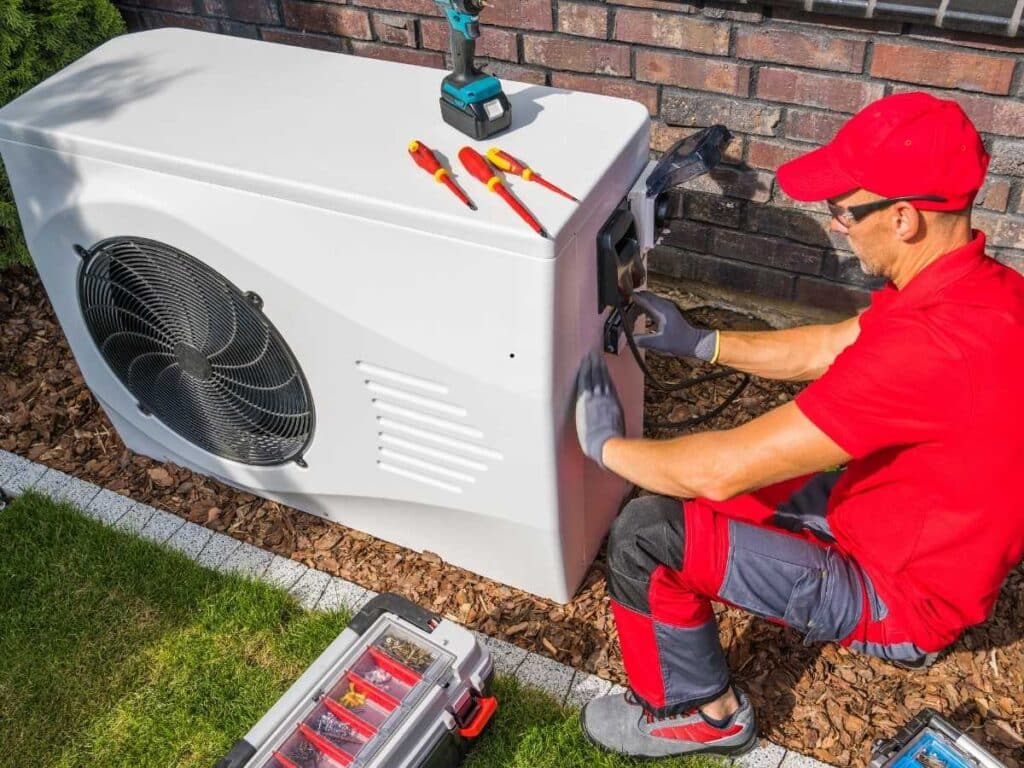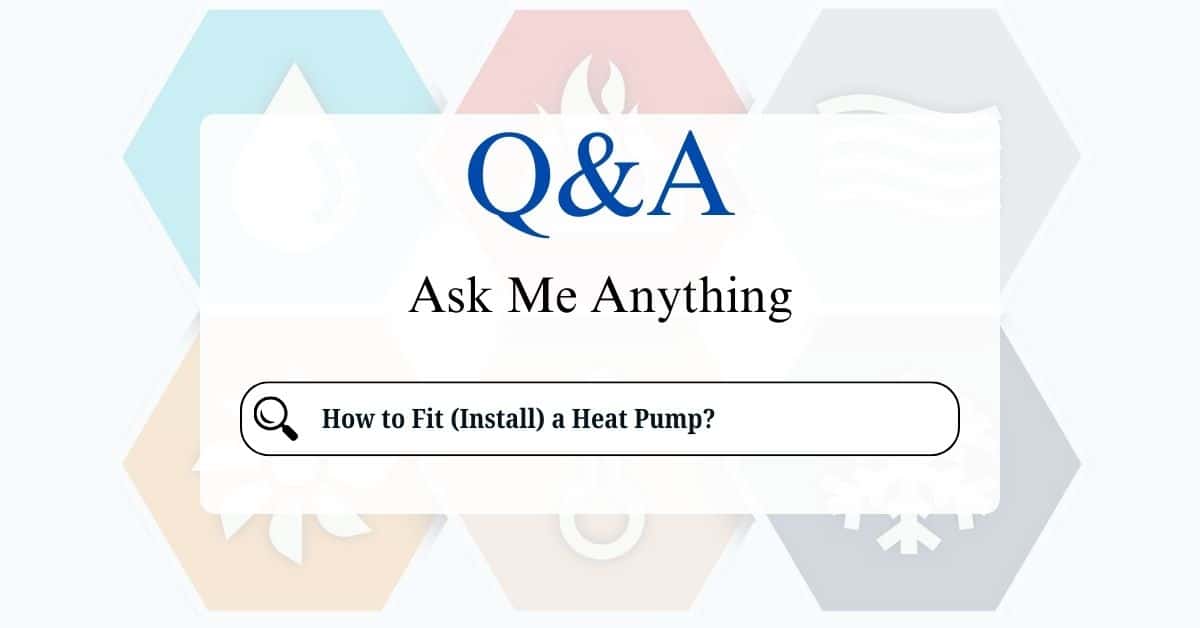Heat pumps are becoming increasingly popular for their energy efficiency and ability to both heat and cool homes. If you’re considering making the switch, it’s important to understand the installation process. However, it’s equally crucial to know that heat pump installation is not a DIY job. This guide will explain the general process so you know what to expect when hiring a professional, emphasizing why professional installation is essential.
Heat pump installation involves several complex steps, including:
- Refrigerant Handling: Refrigerant is a regulated substance that requires specialized handling and certification. Improper handling can be dangerous to both your health and the environment.
- Electrical Work: Heat pumps require specific electrical connections, often including high-voltage wiring. Incorrect wiring can lead to electrical hazards and damage to the system.
- Refrigerant Line Connections: Properly connecting and sealing refrigerant lines is crucial to prevent leaks, which can significantly impact performance and require costly repairs.
- System Sizing and Design: Correctly sizing the heat pump for your home and designing the ductwork (if applicable) is essential for optimal efficiency and comfort.
- System Testing and Commissioning: After installation, the system needs to be tested and commissioned to ensure it’s operating correctly.
Attempting to install a heat pump yourself without the necessary training and experience can be dangerous, void warranties, and potentially lead to costly repairs or even system failure.

The General Heat Pump Installation Process
While you won’t be doing the installation yourself, understanding the general process can help you know what to expect when hiring a professional:
- Site Assessment and Load Calculation: A qualified HVAC technician will visit your home to assess your heating and cooling needs. They’ll perform a Manual J load calculation to determine the appropriate size of heat pump for your home. This considers factors like square footage, insulation, windows, and climate.
- Equipment Selection: Based on the load calculation, the technician will recommend suitable heat pump models that meet your needs and budget. They’ll also discuss different types of heat pumps (air-source, geothermal, mini-split) and help you choose the best option for your home.
- Installation of the Outdoor Unit: The outdoor unit (containing the compressor and coil) will be placed on a level concrete pad or mounting brackets. The technician will ensure proper clearance around the unit for airflow.
- Installation of the Indoor Unit: The indoor unit (air handler or fan coil) will be installed inside your home, typically in an attic, basement, or utility closet. For ductless mini-split systems, the indoor units are mounted on walls in individual rooms or zones.
- Refrigerant Line Connections: The technician will carefully run and connect refrigerant lines between the indoor and outdoor units. They’ll use specialized tools to ensure leak-free connections and properly charge the system with refrigerant.
- Electrical Connections: The technician will make all necessary electrical connections, ensuring they comply with local electrical codes. This includes connecting the unit to the main electrical panel and installing any necessary wiring or disconnects.
- Ductwork Modifications (If Necessary): If you’re replacing an existing furnace with a ducted heat pump, some ductwork modifications might be necessary to ensure proper airflow.
- Thermostat Installation and Wiring: The technician will install a compatible thermostat and connect it to the heat pump system.
- System Testing and Commissioning: After installation, the technician will thoroughly test the system to ensure it’s operating correctly in both heating and cooling modes. They’ll check airflow, refrigerant pressures, and other parameters.
- Explanation and Documentation: The technician should explain how to operate and maintain your new heat pump and provide you with all necessary documentation, including warranties and manuals.
Choosing a Qualified Installer
Selecting a qualified HVAC contractor is crucial for a successful heat pump installation. Here are some tips:
- Look for Licensing and Insurance: Ensure the contractor is properly licensed and insured in your area.
- Check for Certifications: Look for certifications like NATE (North American Technician Excellence) or similar industry credentials.
- Read Online Reviews and Testimonials: Check online reviews and ask for references from previous customers.
- Get Multiple Quotes: Obtain quotes from several contractors to compare pricing and services.
- Ask About Experience with Heat Pumps: Choose a contractor with specific experience installing and servicing heat pump systems.
Heat pump installation is not a DIY project. Professional installation is essential for safety, efficiency, and warranty coverage. Understanding the general installation process can help you know what to expect when hiring a professional.
By following these guidelines and hiring a qualified professional, you can ensure your heat pump is installed correctly and provides you with years of efficient and comfortable heating and cooling.






